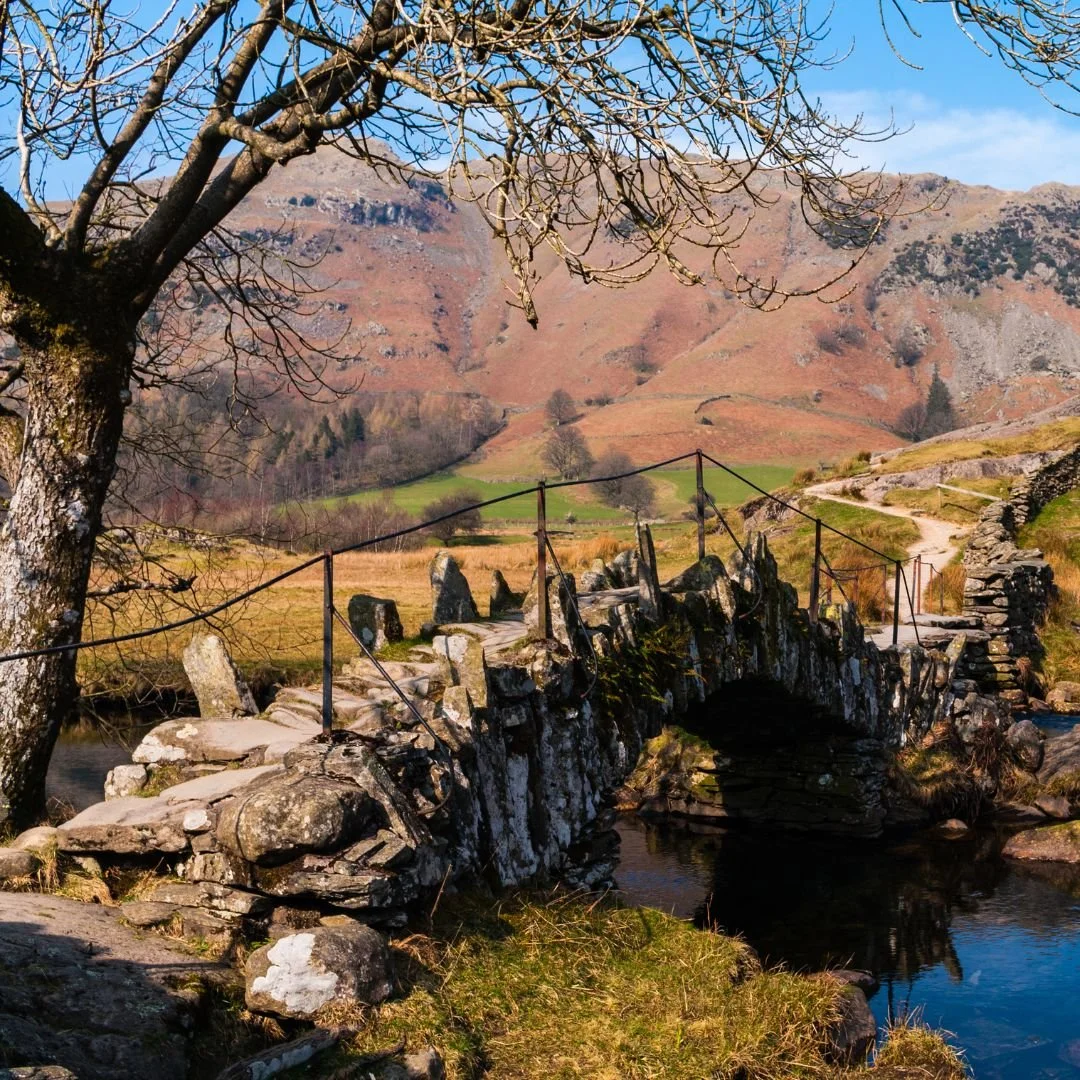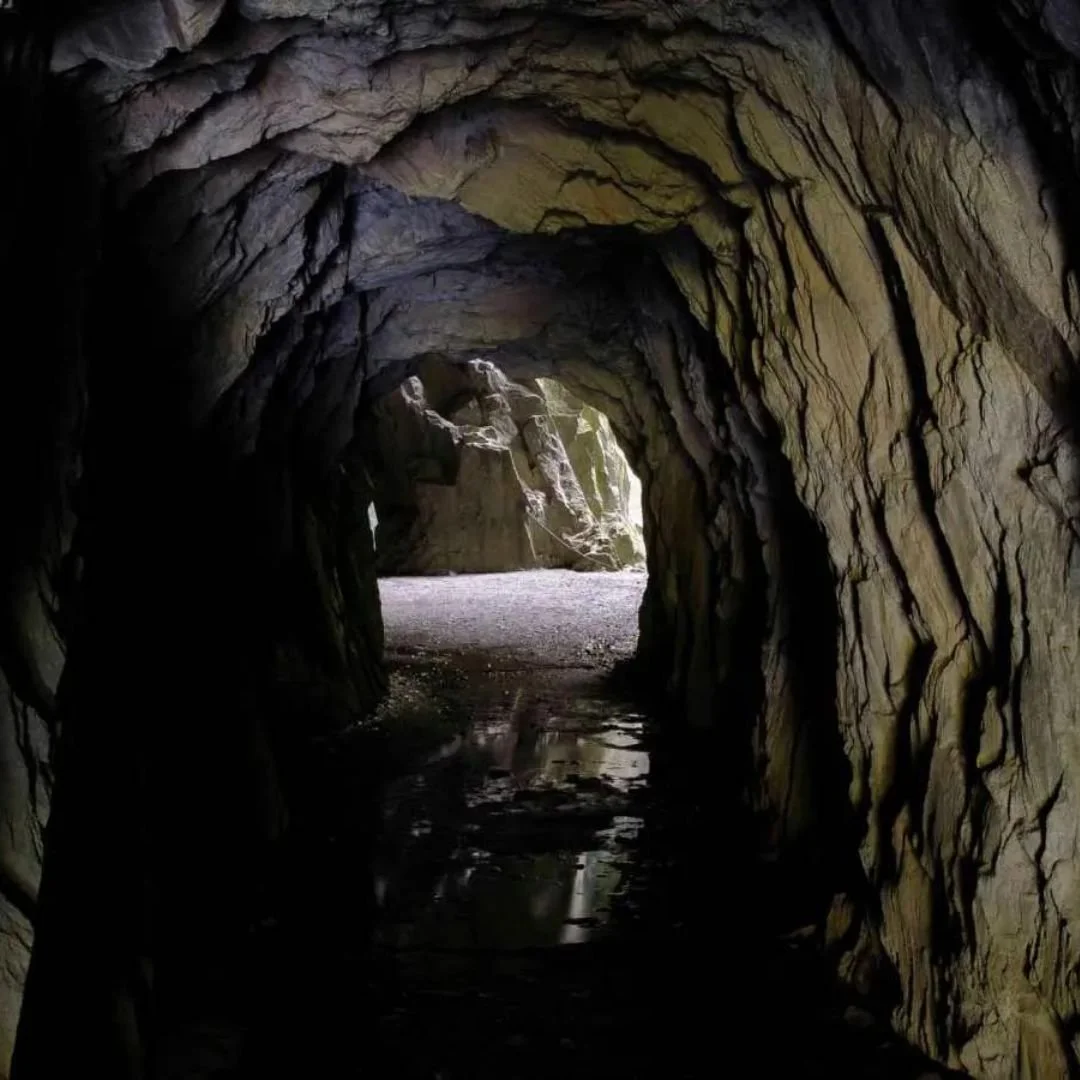Slater's Bridge: Grade II Listed Lake District Gem
Slater's Bridge is a beautiful Grade II listed packhorse bridge in the Lake District, still in use today.
It's one of the oldest surviving bridges in the Lake District and was made entirely from slate by miners who worked in the nearby quarry, Tilberthwaite Fells.
It consists of a 15-foot segmental arch and a flatter span built of slabs, and incorporates a natural boulder in midstream.
Alfred Wainwright, a British author, called it "the most picturesque footbridge in Lakeland, a slender arch constructed of slate from the quarries and built to give the quarrymen a shorter access from their homes".
The bridge is very cobbly and uneven, as you can see in the photo above, but it’s easy enough to cross.
If you need assistance, however, there is a metal bar to hold onto if it’s wet because it can get slippy in the rain.
It stands at an intersection of packhorse routes that would travel from slate quarries like Little Langdale and Hodge Close to Ravenglass and the Cumbrian Coast.
Slate was the local building material for most things here.
Farmhouses, dry stone walls, packhorse bridges and even churches were all built out of this distinctive green stone.
Quarrying started in earnest in the mid-18th century, and at its peak there were around 30 active quarries.
Today, only Elterwater Quarry is still in production, but the scars of slate extraction are still visible on the southern flanks of Little Langdale giving rise to an almost alien world of massive spoil heaps, gaping tunnels and arching caverns.
It was not only slate that was extracted but also copper and iron ore.
At Greenburn mine in Little Langdale it is possible to wander among the remains of the copper workings and imagine how the mine operated.
The area of Little Langdale, where this iconic bridge is, was industrialised since the 16th century, but it reached its peak in the 19th century with a demand for more housing.
Slate quarrying was discontinued in the 1950s but the bridge became a Grade II listed building in 1967.
Today, this ancient bridge still remains and is crossed over by thousands of ramblers every year who are exploring Langdale Valley.
As well as a hotspot for miners, Great Langdale is known to archaeologist s as the source of a particular type of Neolithic polished stone axe head, created on the slopes of the Pike of Stickle and traded all over prehistoric Britain and Europe.
It also supplied stone for some Bronze Age items, including stone wrist-guards.
Today, Great Langdale is a beautiful valley and one of the most visited places in the Lake District, in North West England.
It is a popular location for hikers, climbers and other outdoor enthusiasts who are attracted by the many fells ringing the head of the valley.
Among the best-known features of Great Langdale are the Langdale Pikes, a group of peaks on the northern side of the dale.
England's highest mountain, Scafell Pike, can be climbed by a route from Langdale.
Langdale has views of, in particular, Dungeon Ghyll Force waterfall, Harrison Stickle and Pike of Stickle.
Altering visiting the packhorse bridge, make your way to Cathedral Quarry - a small network of inter-linked quarries above Little Langdale.
The system is best known for its main chamber, which still stands forty feet in height, and is lit by two windows off the main quarry. They are frequently referred to as Cathedral “Cave”.
Having read the sign at the entrance, and accepting its conditions, you then enter a tunnel. For this first tunnel you will probably not need lighting.
At the end of the tunnel you will enter a forty foot high chamber that is known as “The Cathedral”.
The larger of the two openings opens onto the second level of a pit quarry.
The smaller opens out into a narrow, cutting like quarry, which eventually leads back to the entrance where you started.
There are various tunnels to explore, which will require lighting, as one is about 400 feet long!
The crag is owned and managed by the National Trust, which has gone to considerable lengths to keep the quarry open for climbers in recent years, and all group leaders must attend a safety briefing session.
If you enjoyed this blog post, please follow Exploring GB on Facebook for daily travel content and inspiration.
Don’t forget to check out our latest blogs below!
















